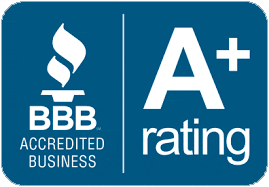5 Roof & Siding Growths You Should Look Out For

The exteriors of your home are constantly exposed to the elements. Because of this, spots of discoloration or growth on your roof and siding seem innocuous or even normal. When doing patches of growth indicate a deeper issue that requires professional evaluation or maintenance? Below are types of growth that can be potentially dangerous or damaging.
Lichen
A lichen is a form of fungus that can spread quickly in environments with plenty of sunlight and water, making the exterior surfaces of your home a likely target. Usually yellow, brown, or green lichen can cause permanent damage and pit on your roof or siding.
Blue-Green Algae
Blue-green algae is a type of bacteria that is commonly found on roofs in wet climates. It appears as unsightly gray or black streaks across your roof. While these algae don’t do structural harm to your roof, they mar the overall appearance of your home as the black streaks left by the organisms are difficult to remove. You should deal with signs of blue-green algae as soon as possible as the marks become more permanent over time.
Moss
While moss growing on a roof may look charming in photos, it is a dangerous growth that can quickly cause serious damage. Moss holds moisture and causes water-based deterioration at an accelerated pace. It also grows ruthlessly and may push underneath tiles, cracking or displacing them. Moss attracts insects and other pests that can cause further issues for your roof. Ultimately, moss is one of the most important growths to watch for and to address immediately.
Mold Growing on Siding
If you notice streaks of mold or mildew on your siding, it’s often a sign that your roof has a leak or that your drainage system is improperly calibrated, allowing moisture to collect near that side of your home. Have a professional check for leaks in that area and adjust down-spouts or perform other solutions. Once you have cared for the underlying problem, the mold won’t return.
Black Mold
Black mold appears as grainy black spots that can appear on both exterior roofing tiles and interior ceilings. It is concerning for two reasons. First, the appearance of mold indicates excessive moisture on your roof. This could be caused by leaks or poor drainage. Second, black mold can be hazardous to human health and should be addressed by an expert as soon as possible.
If you spot any of these growths, it’s time to call a professional. A few spots of growth may not seem like an emergency, but they could be a sign of deeper damage or even a threat to the structural integrity of your roof. Woodbridge Roofing and Siding, recognized as one of the best siding companies in NJ, has the knowledge to assess the extent of the problem and the skills to restore your roof to a safe condition before the damage becomes permanent.

